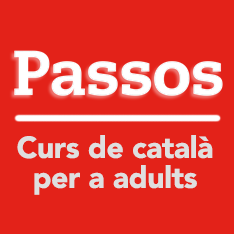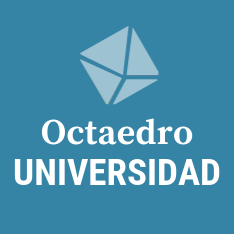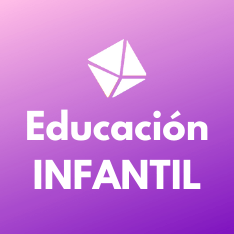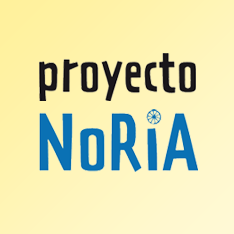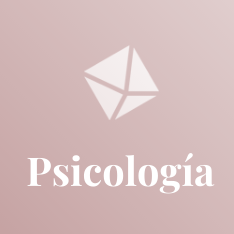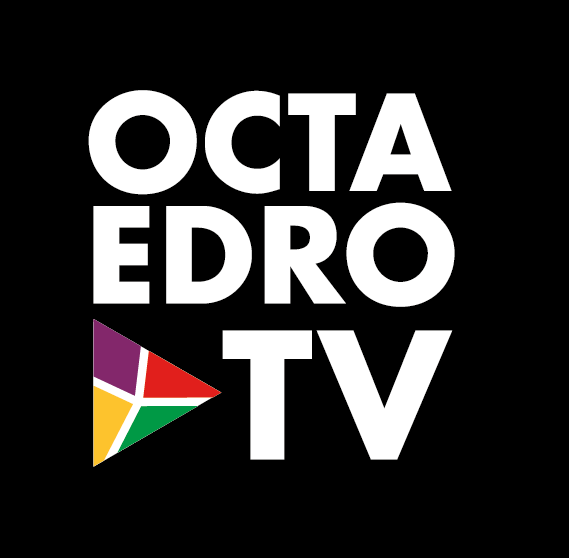Referencias bibliográficas
- Adell Segura, J., y Castañeda Quintero, L. (2010). Los Entornos Personales de Aprendizaje (PLEs): una nueva manera de entender el aprendizaje. En R. Roig Vila & M. Fiorucci (Eds.). Claves para la investigación en innovación y calidad educativas. La integración de las Tecnologías de la Información y la Comunicación y la Interculturalidad en las aulas. [Stumenti di ricerca per l’innovaziones e la qualità in ámbito educativo. La Tecnologie dell’informazione e della Comunicaziones e l’interculturalità nella scuola] (pp.1-16). Alcoy: Marfil – Roma TRE Universita degli studi.
- Andrews, R. y Haythornthwater, C. (Eds.). The handbook of e-learning research. London: Sage.
- Bauer C., Devitt A., y Tangney, B. (2015). The alignment of CMC language learning methodologies with the Bridge21 model of 21C learning European Conference on Computer Assisted Language Learning (EUROCALL), 44-50.
- Bennett, S., Dawson, P., Bearman, M., Molloy, E., y Boud, D. (2016). How technology shapes assessment design: Findings from a study of university teachers. British Journal of Educational Technology, 672- 682. DOI: 10.1111/bjet.12439
- Blessinger, P., y Bliss, T., J., (2016). Open Education. International Perspectives in Higher Education. Cambridge, Reino Unido: Open Book Publishers. https://www.openbookpublishers.com/reader/531#page/1/mode/2up
- Blin, F. y Munro, M. (2008). Why hasn’t technology disrupted academics’ teaching practices? Understanding resistance to change through the lens of activity theory. Computers & Education 50. 475–490.
- BRIDGE21. http://bridge21.ie/
- Byrne J., y Tangney B. (2012). CAWriter - a Computer Supported Collaborative Tool to Support Doctoral Candidates Academic Writing: A Pedagogical and Human-Computer Interaction Perspective Collaborative and Distributed E-Research: Innovations in Technologies. Strategies and Applications, 182-205. DOI: 10.4018/978-1-4666-0125-3
- Cabero, J. (2013). El aprendizaje autorregulado como marco teórico para la aplicación educativa de las comunidades virtuales y los entornos personales de aprendizaje. Revista Electrónica Teoría de la Educación 14(2), 133-156.
- Cárdenas-Robledo, A. y Peña-Ayala, A. (2018). Ubiquitous learning: A systematic review. Telematics and Informatics 35(5), 1097-1132. DOI: 10.1016/j.tele.2018.01.009
- Cavero, J. M. y Ruiz, D. (2017). Educación para la innovación y el emprendimiento: una educación para el futuro: recomendaciones para su impulso. Madrid: Real Academia de Ingeniería D.L.
- Chen, G. D., Chang, C. K., y Wang, C. Y. (2008). Ubiquitous learning website: scaffold learners by mobile devices with information-aware techniques. Computers and Education, 50, 77–90.
Commonwealth for Learning (2015). Vancouver: UnescoDoc.
- Consejo de Europa (2002). Marco Común Europeo de Referencia. Madrid: MECD.
- Council of Europe (2018). The Entrepreneurship 2020 Action Plan. http://ec.europa.eu/growth/smes/promoting-entrepreneurship/action-plan/
- Cuban, L., Kirkpatrick, H., y Peck, C. (2001). High Access and Low Use of Technologies in High School Classrooms: Explaining an Apparent Paradox. American Educational Research Journal 38(4). 813-834.
- Diego, I. y Vega, J. (2015). La educación para el emprendimiento en el sistema educativo español. MECD: Madrid
Effects of teaching & learning styles on students’ reflection levels for ubiquitous learning. Computers & Education, 57, 1194-1201. DOI: 10.1016/j.compedu.2011.01.004
Friedewald, M., y Raabe, O. (2011). Ubiquitous computing: An overview of technology impacts. Telematics and Informatics, 28(2), 55-65. DOI: 10.1016/J.TELE.2010.09.001
- Geser, G. (2007). Open educational practices and resources: OLCOS roadmap 2012. Salzburg: EduMedia Group.
- Graf, S., Liu, T.C., y Kinshuk (2010). Analysis of learners' navigational behaviour and their learning styles in an online course. Journal of Computer Assited Learning 26, 116-131. DOI: 10.1111/j.1365-2729.2009.00336.x
- Grech, A. y Camilleri, A. F. (2017). Blockchain in Education. En A. Inamorato dos Santos (Ed.), JRC Sciencefor Policy Report (pp.1-136). Sevilla: Joint Research Center. DOI: http://doi.org/10.2760/60649
- Heinneman, M. H. (2005). Teacher-student interaction and learning in online theological education. Part I: Concepts and concerns. Christian Higher Education, 4, 183-209. DOI: 10.1080/15363750590959995
- Hsieh, S.-W., Jang, Y.-R., Hwang, G.-J., y Chen, N.-S. (2011). Effects of teaching and learning styles on students’ reflection levels for ubiquitous learning. Computers and Education 57, 1194-1201. http://dx.doi.org/10.1016/j.compedu.2011.01.004
- Huang, Y.M., Lin, Y.T., y Cheng, S.C. (2010). Effectiveness of a mobile plant learning system in a science curriculum in Taiwanese elementary education. Computers and Education, 54(1), 47-58.
- Iiyoshi, T., y Kumar M. S. V. (Eds). (2008). Opening up Education. Cambridge, MA: MIT Press.
- Kagan, L. Kagan, M. & Kagan, S. (1997). Cooperative Learning Structures for Teambuilding. San Clemente, CA: Kagan Publishing.
- Kahle, D. (2008). Designing Open Educational Technology. En T. Iiyoshi y M. S. V. Kumar (Eds). Opening up Education (pp.27-45). Cambridge, MA: MIT Press.
- Kivinen, O., & Ristelä, P. (2002). Even Higher Learning Takes Place by Doing: From Postmodern Critique to Pragmatic Action. Studies in Higher Education 27(4), 419-430. DOI: 10.1080/0307507022000011534
- Kuratko, D. (2005). The Emergence of Entrepreneurship Education: Development, Trends, and Challenges. Entrepreneurship: Theory and Practice 29(5). 577-597. DOI: doi.org/10.1111/j.1540-6520.2005.00099.x
- Lawlor J., Conneely C., Oldham E., Marshall K., y Tangney B. (2018), Bridge21: Teamwork, Technology and Learning – A pragmatic model for effective 21C Team-based Learning, Technology, Pedagogy and Education 27(2), 211-232. DOI: 10.1080/1475939X.2017.1405066
- Lawlor J., Marshall K., y Tangney B. (2015). Bridge21 – Exploring the potential to foster intrinsic student motivation through a team-based, technology mediated learning model, Technology, Pedagogy and Education, 1-20. DOI: 10.1080/1475939X.2015.1023828http://dx.doi.org/10.1080/1475939X.2015.1023828
- Layne, M. (2018). International Journal of Open Educational Resources. http://www.researchoerjournal.net/
- Li, H., y Sakamoto, Y. (2014). Social impacts in social media: An examination of perceived truthfulness and sharing of information. Computers in Human Behaviour 41, 278-287. DOI: 10.1016/j.chb.2014.08.009
- Littlejohn, A. y Hood, N. (2016). How educators build knowledge and expand their practice: The case of open education resources. Bristish Journal of Educational Technology, 499-510.
- Lynch, C. (2008). Digital Library, Learning Communities and Open Education en T. Iiyoshi y M. S. V. Kumar (Eds). Opening up Education (pp.105-118). Cambridge, MA: MIT Press.
- McGreal, R., Miao, F., y Mishra, S. (2016). Introduction En F. Miao, S. Mishra y R. McGreal (Eds.), Open Open Resources: Policy, Costs and Transformation (pp.1-11). París: UNESCO y Commonwealth of Learning.
- Mincu, M.E., Tze-Chang Liu, T. y Ondercin, D. (2012). Pedagogy of the Open Society: Knowledge and the Governance of Higher Education. Rotterdam: Sense.
MIT Opencourse ware https://ocw.mit.edu/courses/translated-courses/spanish/
- Morner, M. y von Krogh, G. (2009). A Note on Knowledge Creation in Open-Source Software Projects: What Can We Le.arn from Luhmann’s Theory of Social Systems? Systemic Practice and Action Research 22 (6), 431–443. DOI: 10.1007/s11213-009-9139-7
- OECD. (2007). Giving knowledge for free: The emergence of open educational resources. Danvers: CERI.
- Pachler, N., Bachmair, B., y Cook, J. (2010). Mobile learning: Structures, agency, practices. New Tork: Springer.
- Partnership for 21st Century Learning, P21. Century Learning 21. http://www.p21.org/about-us/our-mission
- Peterman, N. y Kennedy, J. (2003). Enterprise Education: Influencing Students’ Perceptions of Entrepreneurship. Entrepreneurship: Theory and Practice 34(6) 838-869. DOI: 10.1046/j.1540-6520.2003.00035
- Peters M.A., Liu T. C., y Ondercin D.J. (2012). Esoteric and Open Pedagogies. En: The Pedagogy of the Open Society, Open Education 1 (pp.33 -54). Rotterdam: Sense. DOI: 10.1007/978-94-6091-967-1_3
- Peters, M. A., & Britez, R. G. (Eds.) (2008). Open education and education for openesss. Rotterdam: Sense.
- Peters, M.A., y Britez, R. G. (2008). Introduction. En M. A. Peters y R. G. Britez (Eds.), Open education and education for openess (pp. xvii-xxii). Rotterdam: Sense.
- Piaget, J. (1932). The moral judgement of the child. London: Free.
- Pimmer, C., Mateescub, M. y Gröhbiela, U. (2016). A systematic review of empirical studies. Computers in Human Behavior 63, 490 501. DOI: 10.1016/j.chb.2016.05.057
- Plotkin, H. (2010). Free to learn: An open educational resources policy development guidebook for community college governance officials. San Francisco: Creative Commons.
- Quicios, P., Ortega, I., y Trillo, M. (2015). Aprendizaje ubicuo de los nuevos aprendices y brecha digital formativa [ Ubiquitous learning of new students and educational digital divide]. Píxel-Bit. Revista de Medios y Educación 46, 155-166.
- Sánchez-Elvira Paniagua, A. y Simpson, O. (2018). Developing Student Support for Open and Distance Learning: The EMPOWER Project. Journal of Interactive Media in Education 1, 1-10. DOI: 10.5334/jime.470
- Selwyn, N. (2007). The use of computer technology in university teaching and learning: a critical perspective. Journal of Computer Assisted 23. 83-94. DOI: 10.1111/j.1365-2729.2006.00204.x
- Spector, J. M., Merrill, M. D., Ele, J., y Bishop, M. J. (Eds.) (2014). Handbook of research on educational communications and technology. New York: Springer Science + business Media. DOI: 10.1007/978-1-4614-3185-5
- Stevens, J., Bradbury, S., y Hutley, S. (2017). Open education in practice – how policy can lead to positive change. Journal of the Australian Library and Information Association, 66(3), 249-258.
- Teaching for Tomorrow. http://tft-project.eu/index.php/the-project/
- Tedesco, J. C. (2011). Los desafíos de la educación básica en el siglo XXI. Revista Iberoamericana De Educación 55, 31-47.
- Tsoukas, H. (1996). The firm as a distributed knowledge system: A constructionist approach. Strategic Management 17, 11-25.
- Wen, S., y Liu, T. (2015). Reconsidering teachers’ habits and experiences of ubiquitous learning to open knowledge. Computers in Human Behavior, 55, 1194-1200. DOI: http://doi.org/10.1016/j.chb.2015.02.023
- White, D. & Le Cornu, A. (2011). Visitors and Residents: A new typology for online engagement. First Monday 16(9), 1-8.
